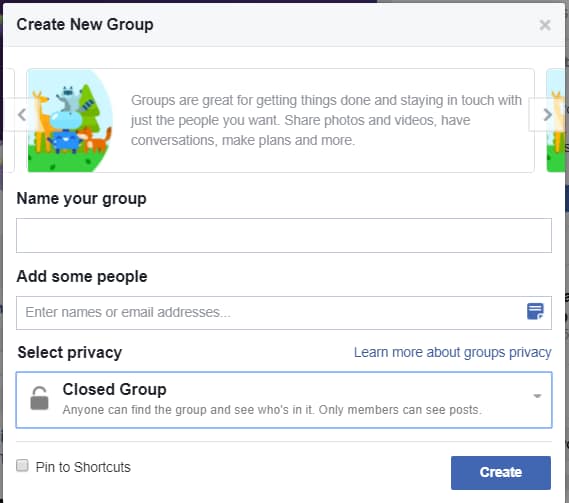Today’s workers are bored, and they feel more isolated and disengaged from their employers than ever before. A recent study shows the root of the problem, with 60% of employees reporting feeling less-than-enthusiastic about internal communications. Among those surveyed, 44% percent say that their business’s internal communications are stagnant, with nothing having changed in the past five years. This survey demonstrates that few businesses are investing in newer technologies like internal social media.
The benefits of social media for internal usage
In addition to employee morale, a brand’s social media interactions can bring transparency to the workplace. With one study showing that 94% of customers place a priority on transparency, it’s important that businesses develop a reputation for being open about everything they do. In fact, of all of the things your business can do on social media, interacting with customers is perhaps the most important, with 48% saying that brand interactions are likely to prompt them to make a purchase.
People are more likely to feel included when everyone is invited to internal social media groups. Instead of a group of workers feeling as though they’re out of the loop, everyone will be able to log into their approved forums to get the latest news. With more employees working remotely, this is especially important, because many remote workers report being prone to paranoia and feeling excluded. An internal social network can loop them in throughout the day even when they aren’t physically present in the office.
Another reason to implement an internal social media platform is to get ahead of your team. If you don’t lead the charge, your employees will find a way to communicate with each other on their own, whether through instant messaging, text, or using tools like Facebook Groups. When your leadership team creates the network, you can manage those communications, setting boundaries and policies that protect your business.
Strategies for team building with social media
For these internal social networks to be most effective they need to strengthen teams and improve productivity. As important as it is to share progress updates and ask questions, workers should also be encouraged to use these networks to bond. Workers may have a conversation about the latest movie they saw or their plans for the weekend. These daily personal communications make working relationships stronger, which can lead to the overall positive environment that has been proven to make teams more productive.
For small and mid-sized businesses, Facebook Groups is an ideal solution for internal social media. You can create a Facebook group by going to the Groups section of Facebook and clicking the “Create New” button near the top of the screen. A form will pop up allowing you to create the group and select its privacy level:
You have three options when setting up a Facebook Group: open, closed, and secret. An open group is public; anyone can read the information posted there. A closed group, on the other hand, only shares information with those added as members.
Despite the private nature of a closed group, though, it isn’t without flaws. Your closed group will show up in searches on Facebook and possibly even on basic internet queries. By setting your group as secret, you keep your forum visible only to those you’ve invited to join. This means that not only does the information inside remain private, non-employees will have no idea your group exists. This can keep your employees safe.
In addition to team building, you can use internal social media in several different ways. These include:
- Person-to-person chat — Facebook has an instant messenger that can work handily for sharing messages among team members
- Exchanging shifts — For businesses that employ shift workers, social media can be an easy way to make arrangements
- Subgroups — Within each forum, administrators have the opportunity to set up subgroups where employees can communicate only with those in their immediate circle
Tools you can use for internal social media
Facebook Groups isn’t the only tool businesses can use for internal communications. In fact, Facebook has its own social network, designed specifically for business use. Workplace by Facebook is now used by 14,000 businesses, including large corporations like Starbucks and Club Med.
Slack is another popular option, used by companies like Airbnb, Oracle, and even the team behind Revive.Social.

Aside from being slightly higher priced, Slack is similar in features to Workplace by Facebook. Which tool you use will come down to personal preference.
No matter which internal social media platform you use, make sure you put tools in place to measure activity. Grytics specializes in providing advanced analytics for Facebook Groups, allowing you to see which members are most and least active. Perhaps most importantly, though, you can pull information on trending topics, which will give you an idea of the things that matter most to your team members. Slack features its own built in analytics.
Creating rules for internal social media conduct
Though social media plays an important role in many of our lives, it’s still a relatively new technology, and many are still struggling to find the right balance between the professional and the personal. Should I add my boss on Facebook? Do they want me to? Do I even want to? Because of this, setting clear boundaries and rules for internal social media groups is a strong idea.
These rules may include:
- Keeping all activity in the group confidential, and not sharing it (including screenshots) with anyone outside the group
- Maintaining professionalism in the group, and only posting content that directly affects the team or the business
- No uses of profanity, hate speech, or discrimination. It is a workplace, after all
- Prohibiting an employee-only group that managers aren’t permitted in
- Not sharing or discussing brand information in the group that is top secret or proprietary that you can’t afford to be hacked, such as client files, passcodes, or financial information
- Not allowing users who share accounts with their friends, spouses, or partners to enter the group
- All shift change requests need to be approved in-office, even if a manager says “that should be fine” online
- Don’t tag individuals in posts for shift-change requests
You can create these rules and discuss them in-office, but you should also list them clearly in the group’s description. If appropriate, you can remind your employees that breach of the rules, if severe, could result in banning from the group or even termination.
In addition to the rules that set boundaries, you can also offer helpful guidelines in the description for how you want the group to be used. You could say, for example:
- Shift pick up requests must contain the date, time, and position in the posting
- Please tag your team manager if unsure of an answer that’s needed promptly for a project
- On #FunFridays, feel free to share what you’re doing with your weekend
- If requesting information on a project, please tag all associated individuals
Pitfalls of internal social media to watch for
Unfortunately, any method of communication has its downfalls and for online communication, one of the biggest is the privacy risks that come with it. Even if your employees interact on a private, password-protected forum, someone can share the information or take a screenshot. Hackers can also gain access, which could put your business’s reputation at risk.
Larger corporations may find their internal social networks aren’t the best outlet for sharing exclusive information; it may, after all, potentially lead to a leak. Smaller organizations, however, may have the luxury of freely sharing in these groups since they know members personally.
The biggest challenge with social media as a communication tool is that things can quickly get out of hand. Disagreements may escalate, or things can shift into the personal instead of the professional. It’s important to closely monitor these platforms so you can avoid alienating employees, just like you monitor your external business pages to avoid alienating your customers.
An internal social media platform could give your team’s communication the jump start it needs. Take the time to find the perfect solution and set it up in a way that makes it fully effective for your business.
Conclusion
Social media marketing doesn’t just have to be a communication method between you and consumers; it can be valuable as a communication and team building tool for your internal employees, too. Keep this in mind and test out different platforms for improving internal communications to see what works best for you and your team.
And, most importantly, remember that anything that appears on social media can (and, if it’s juicy enough) likely will be leaked. Keeping confidential information off the social media group unless it’s a very small and well trusted group is always advised to protect your brand and its proprietary information. Make sure you remind your employees of this regularly if needed, too.




